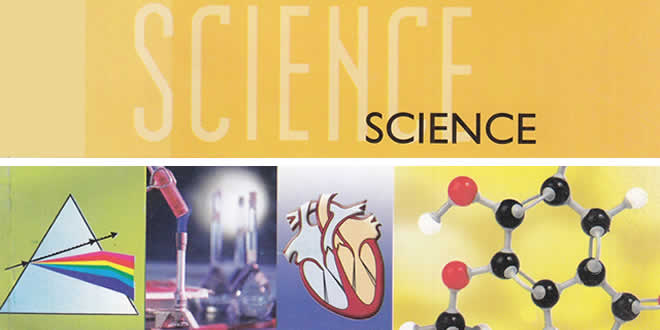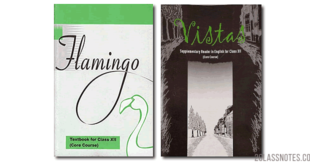Top 50+ CBSE Class 10 Science MCQs for Board Exam 2024 with Answers to Secure Good Marks
Class 10 Science MCQ: Get top 50 important multiple-choice questions (MCQs) for the CBSE Class 10th Science board exam 2024 in this article. Make sure you practice these MCQs for the best results.
CBSE Board Class 10 Science MCQs (With Answers) 2024: The CBSE Class 10 Science Board Exam 2023–24 is scheduled to be conducted on March 2, 2024. As less than a month is left until the final exam, it is crucial for students to practice a good number of science questions to assess their level of preparation.
In this article, we have provided the top 50 multiple-choice questions (MCQs) in science for CBSE Class 10 students. These questions are created in accordance with the most recent CBSE Class 10 Science syllabus for 2023–2024, previous year question papers, and sample papers. Through practicing these MCQs, students can evaluate their level of preparation and develop an efficient time management strategy for the final exam day.
CBSE Class 10 Science Paper: Highlights
| PARTICULARS | DETAILS |
| Exam Conducting Body | Central Board of Secondary Education (CBSE) |
| Subject | Science |
| Mode of Exam | Offline |
| Exam Duration | 3 Hours |
| Medium of Exam | English / Hindi |
| Type of Questions | MCQs, Short and Long Answer Type Questions |
| Theory Marks | 80 |
| Internal Assessment | 20 |
| Total Marks | 100 |
| Passing Marks | 33% in aggregate |
CBSE Class 10 Science Paper Pattern 2024
CBSE Class 10 Exam 2024 will be of total 100 marks out of which the theory paper will be for 80 marks, while the internal assessments will account for the remaining 20 marks. As per the latest CBSE Class 10 Exam Pattern 2023-24, the structure of the Science question paper will be as follows:
| SECTION | Number of Questions | Marks per Question | Weightage (in Marks) |
| Section A: MCQs | 20 | 1 | 20 |
| Section B: Short Answer Type Questions – I | 6 | 2 | 12 |
| Section C: Short Answer Type Questions – II | 7 | 3 | 21 |
| Section D: Long Answer Type Questions | 3 | 5 | 15 |
| Section E: Source-Based / Case-Based Questions | 3 | 4 | 12 |
CBSE Class 10 Science Top 50 MCQs
Question 01: Which option correctly shows the transport of oxygen to the cell?
(a) Lungs →pulmonary artery →right atrium → right ventricle→ vena cava → body cells
(b) Lungs →pulmonary vein →right atrium →right ventricle → aorta → body cells
(c) Lungs →pulmonary artery →left atrium → left ventricle → vena cava → body cells
(d) Lungs →pulmonary vein →left atrium →left ventricle →aorta → body cells
Answer 01.
Question 02: What type of chemical reactions take place when electricity is passed through water?
(a) Decomposition
(b) Combination
(c) Displacement
(d) Double displacement
Answer 02.
Question 03: Posture and balance of the body is controlled by:
(a) Cerebellum
(b) Medulla oblongata
(c) Pons
(d) Cerebrum
Answer 03.
Question 04: Before burning in air, the magnesium ribbon is cleaned by rubbing with a sand paper to:
(a) Make the ribbon surface shinier
(b) Remove the layer of magnesium oxide from the ribbon surface
(c) Remove the dust from the ribbon surface
(d) Remove the moisture from the ribbon surface.
Answer 04.
Question 05: Barium chloride on reacting with ammonium sulphate forms barium sulphate and ammonium chloride. Which of the following correctly represents the type of the reaction involved?
(i) Displacement reaction
(ii) Precipitation reaction
(iii) Combination reaction
(iv) Double displacement reaction
(a) (i) only
(b) (ii) only
(c) (iv) only
(d) (ii) and (iv)
Answer 05.
Question 06: A milkman adds a very small amount of baking soda to fresh milk. Why?
(a) To increase the rate of fermentation
(b) To decrease the rate of fermentation
(c) To improve its quality
(d) To make paneer
Answer 06.
Question 07: What is the nature of nutrition in fungi?
(a) Saprotrophs
(b) Parasite
(c) Mixed autotrophs
(d) Autotrophs
Answer 07.
Question 08: Which conducting tissue is responsible for multidirectional transport in plants?
(a) Guard Cell
(b) Xylem
(c) Phloem
(d) Parenchyma
Answer 08.
Question 09: What is the normal systolic and diastolic pressure in humans –
(a)80 mm Hg/ 120 mm Hg
(b)80 mm Hg/ 80 mm Hg
(c)120 mm Hg/ 120 mm Hg
(d)120 mm Hg / 80 mm Hg
Answer 09.
Question 10: Which of the following non-metal is liquid at room temperature?
(a) Phosphorous
(b) Bromine
(c) Mercury
(d) Carbon
Answer 10.
Question 11: What is the main function of the cerebrum?
(a) Thinking
(b) Hearing
(c) Memory
(d) Balancing
Answer 11.
Question 12: The highest coordinating center in the human body is:
(a) Kidney
(b) Heart
(c) Brain
(d) Spinal cord
Answer 12.
Question 13: The longest fiber on the cell body of a neuron is called:
(a) Axon
(b) Sheath
(c) Cytoplasm
(d) Dendrites
Answer 13.
Question 14: Which of the following diseases is not sexually transmitted?
(a) Syphilis
(b) Gonorrhea
(c) HIV-AIDS
(d) Hepatitis
Answer 14.
Question 15: The blue appearance of the sky is due to:
(a) Atmospheric refraction
(b) Scattering of light
(c) Presence of plants in water
(d) None of these
Answer 15.
Question 16: The phenomenon of light scattering by colloidal particles is known as:
(a) Dispersion
(b) Tyndall effect
(c) Atmospheric refraction
(d) Internal reflection
Answer 16.
Question 17: Sunlight is passed through a transparent medium having very fine particles These particles scatter light. Which among the given components of light undergoes more scattering?
(a) Yellow
(b) Blue
(c) Red
(d) Orange
Answer 17.
Question 18: Which of the following is a biodegradable waste?
(a) Aluminum can
(b) DDT
(c) Plastic bag
(d) Cow dung
Answer 18.
Question 19: The process in which non-biodegradable pesticides accumulate in increasing amounts at each higher trophic level within the food chain is referred to as:
(a) Biomagnification
(b) Eutrophication
(c) Pollution
(d) Accumulation
Answer 19.
Question 20: What term is used to refer to the genetic makeup of an individual organism?
(a) Allele
(b) Homozygous
(c) Genotype
(d) Phenotype
Answer 20.
Question 21: What should be the core of an electromagnet?
(a) Hard iron
(b) Soft iron
(c) Rusted iron
(d) None of above
Answer 21.
Question 22: In which medium does light have the maximum velocity?
(a) Glass
(b) Diamond
(c) Vacuum
(d) Water
Answer 22.
Question 23: In human females, an event that indicates the onset of reproductive phase is:
(a) Growth of the body
(b) Menstruation
(c) Change in voice
(d) None of the above
Answer 23.
Question 24: The device used for producing electric current is called a:
(a) Motor
(b) Galvanometer
(c) Ammeter
(a) Generator
Answer 24.
Question 25: The direction of force on a current carrying conductor in a magnetic field is given by:
(a) Left hand thumb rule
(b) Fleming’s right-hand rule
(c) Right hand thumb rule
(d) Fleming’s left-hand rule
 Class Notes NCERT Solutions for CBSE Students
Class Notes NCERT Solutions for CBSE Students






